It looks like a teddy bear. It feels like a teddy bear. But Wabi Buddy is no simple teddy bear.
Using the latest wireless technology, Wabi Buddy allows friends, parents and grandparents who are far from home to send a greeting in their own voice to a child through his or her bear.
"Grandma could call and send a lullaby every single night if she wanted to," said Mark Bradlee, the CEO and founder of Wabi Inc, which hopes to have the bears in stores by mid-year. "Or if Mom or Dad's working, they could call and tell their child good night."
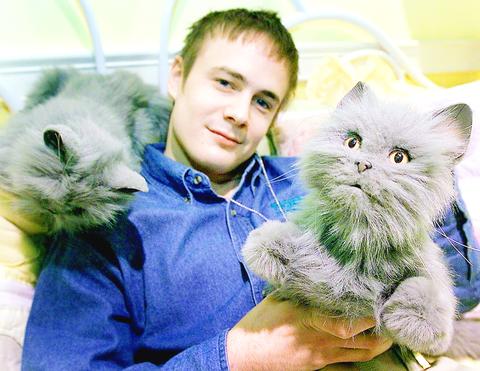
PHOTO: NY TIMES
Wabi was unveiled at this year's American International Toy Fair, where toys for both entertainment and instructional uses employ the latest technology.
To leave a message on Wabi, someone dials a designated number, types in a special code for their child's bear, then records a greeting and programs the time it should be delivered.
Children know there's a message waiting when they hear their bear giggle. To hear it played, they push the bear's belly button.
Unlike Bradlee's other creation -- the highly mechanical Teddy Ruxpin -- the Wabi bear delivers plenty of cuteness along with the technology in its plush 30cm body.
But parents should be forewarned that there will be a US$0.10-a-minute calling fee on top of the bear's US$49 cost.
Manufacturers hope such new products will help boost toy sales, which climbed 1.7 percent this year to US$25 billion, by another 6 percent this year.
At the Javits Convention Center, there was technology not only in plush animals, but in lots of items targeted at girls, everything from dancing dolls to light-up hair accents and anklets. It was also in a slew of Game Boy-like devices and in battling robots.
It was in an R2-D2 robot that can sing songs, sense obstacles, and carry a can of soda. The robot will sell for US$100 and be on the market in April just weeks before the release of the next Star Wars movie in May.
In particular, Vtech's showroom was a smorgasbord of electronic eye and ear candy.
Spokesman Jeff Jackson said new sensor-filled toys such as the Discovery Playground are designed to "empower newborns." Just a wiggle of a nearby toe brings the playground magically to life with calypso music and jungle sounds.
"This toy reacts to what a baby is actually capable of doing," Jackson said.
The playground will be available this fall for US$49.99.
Other new Vtech toys seemed to belong more in a briefcase than in a toy box.
For example, the company's new XL Series includes Palm Pilot-like handhelds that can play age-appropriate educational games or be connected to a computer to download information for school projects from the Internet.
"These are a bit like Game Boys, but are educational," Jackson said. "And they have touch screens just like a Palm Pilot."
For preschoolers, the company has pinned its hopes on Smarty's Workshop, featuring Smarty as an interactive friend who moves, talks, and even dances.
Most important, he teaches children to complete simple projects using play areas such as a screw-and-bolt station. Using recognition technology, Smarty senses what area of the workbench children are playing in and asks appropriate questions. Each right answer and each step taken -- such as hammering three times -- is recognized and recorded on an LCD screen.
The workshop will be available this fall for US$69.99.
Also showing off handhelds at the toy fair was LeapFrog Enterprises, which has expanded its Quantum Leap line to fit the needs of high school students.
The iQuest Interactive Talking Handheld helps students study for their math, science or social studies tests as well as prepare for the ACT or SAT with special practice drills.
The company has not forgotten about its popular line of LeapPads, the interactive learning platform that helps children to read. The company is expanding its software selection, with a 10-book phonics line coming out this year.
"All of our items are about learning, but learning in a fun way," said spokesman Tom Prichard.
That's not to say that all high-tech toys displayed an educational bent. Indeed there were plenty of robotic creatures in the spotlight this week as well.
One of the most talked-about toys at the toy fair was from Tiger Electronics, the same company that introduced the world to Furby, the cuddly noisemaker with the microchip heart.
Furreal Friends is a line of electronic cats infused with sensors and animated from the tops of their heads to the tips of their tails. They mimic the movements of real cats when touched, even becoming agitated when you pull their tail. Available in the fall, the cats will retail for US$34.99.
Much more menacing are Hasbro's new AI Dragons, a twist on last year's BIO Bugs. Boasting what Hasbro calls "nervous network technology," the bugs reacted like real bugs whenever they bumped up against a wall or other obstacle.
Operated by remote control, the lifelike dragons are even more advanced. If they hit a wall, they will automatically back up. And they display scary-looking infrared eyes and the ability to fight one another.
"If put in guard mode, they'll just creep around your house," said Josslynne Lingard, a Hasbro spokeswoman.
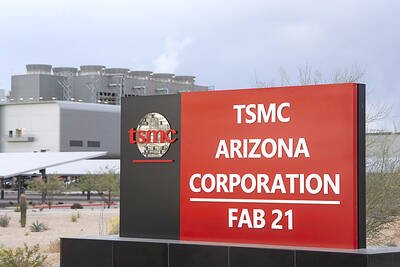
Taiwan Semiconductor Manufacturing Co (TSMC, 台積電), the world’s biggest contract chipmaker, booked its first-ever profit from its Arizona subsidiary in the first half of this year, four years after operations began, a company financial statement showed. Wholly owned by TSMC, the Arizona unit contributed NT$4.52 billion (US$150.1 million) in net profit, compared with a loss of NT$4.34 billion a year earlier, the statement showed. The company attributed the turnaround to strong market demand and high factory utilization. The Arizona unit counts Apple Inc, Nvidia Corp and Advanced Micro Devices Inc among its major customers. The firm’s first fab in Arizona began high-volume production
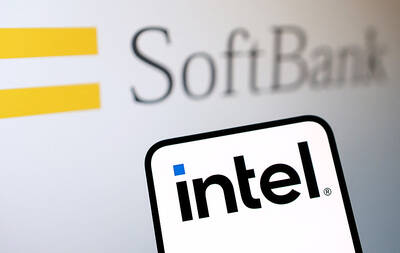
VOTE OF CONFIDENCE: The Japanese company is adding Intel to an investment portfolio that includes artificial intelligence linchpins Nvidia Corp and TSMC Softbank Group Corp agreed to buy US$2 billion of Intel Corp stock, a surprise deal to shore up a struggling US name while boosting its own chip ambitions. The Japanese company, which is adding Intel to an investment portfolio that includes artificial intelligence (AI) linchpins Nvidia Corp and Taiwan Semiconductor Manufacturing Co (TSMC, 台積電), is to pay US$23 a share — a small discount to Intel’s last close. Shares of the US chipmaker, which would issue new stock to Softbank, surged more than 5 percent in after-hours trading. Softbank’s stock fell as much as 5.4 percent on Tuesday in Tokyo, its
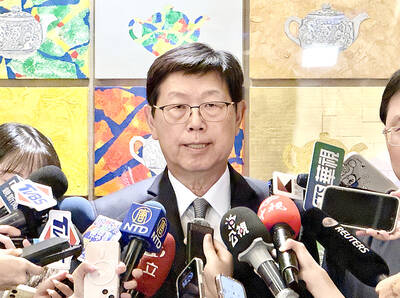
COLLABORATION: Softbank would supply manufacturing gear to the factory, and a joint venture would make AI data center equipment, Young Liu said Hon Hai Precision Industry Co (鴻海精密) would operate a US factory owned by Softbank Group Corp, setting up what is in the running to be the first manufacturing site in the Japanese company’s US$500 billion Stargate venture with OpenAI and Oracle Corp. Softbank is acquiring Hon Hai’s electric-vehicle plant in Ohio, but the Taiwanese company would continue to run the complex after turning it into an artificial intelligence (AI) server production plant, Hon Hai chairman Young Liu (劉揚偉) said yesterday. Softbank would supply manufacturing gear to the factory, and a joint venture between the two companies would make AI data
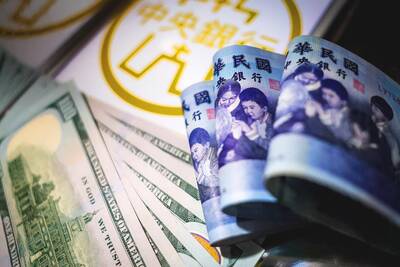
DOLLAR SIGNS: The central bank rejected claims that the NT dollar had appreciated 10 percentage points more than the yen or the won against the greenback The New Taiwan dollar yesterday fell for a sixth day to its weakest level in three months, driven by equity-related outflows and reactions to an economics official’s exchange rate remarks. The NT dollar slid NT$0.197, or 0.65 percent, to close at NT$30.505 per US dollar, central bank data showed. The local currency has depreciated 1.97 percent so far this month, ranking as the weakest performer among Asian currencies. Dealers attributed the retreat to foreign investors wiring capital gains and dividends abroad after taking profit in local shares. They also pointed to reports that Washington might consider taking equity stakes in chipmakers, including Taiwan Semiconductor